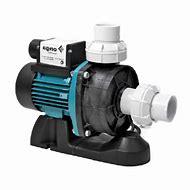In the dynamic world of design, where aesthetics meets functionality, innovations in technology play a pivotal role. Permanent Magnet Water Pumps and Solar Booster Water Pumps represent cutting-edge solutions in fluid transfer systems, offering opportunities for designers. This article delves into these two pump technologies, examining their design potential, applications, and how they can bring intelligence and sustainability to water pump systems.
Permanent Magnet Water Pump: Marrying Design Aesthetics
Principle of Permanent Magnet Water Pump:
The Permanent Magnet Water Pump harnesses the magnetic field generated by permanent magnets to drive its operation, presenting a technologically advanced and energy-efficient solution for fluid transfer. The principle involves the interaction between the magnetic field produced by the permanent magnets and the magnetic field generated by the electric current passing through coils, resulting in the rotation of the pump impeller and efficient fluid conveyance. By eliminating brush and friction losses, Permanent Magnet Water Pumps enhance overall efficiency and reliability compared to traditional induction electric water pumps.
Advantages of Permanent Magnet Water Pump in Design:
1. Compact Design Aesthetics:
The high magnetic energy density of permanent magnets allows for a more compact design, providing designers with increased flexibility in spatial arrangements and meeting diverse design requirements.
2. Low Noise Emission:
The use of brushless direct current (DC) motor technology reduces mechanical wear, resulting in minimal noise during operation. This characteristic contributes to creating serene indoor environments.
3. Energy Efficiency as a Design Element:
Designers can leverage the high energy efficiency of Permanent Magnet Water Pumps to not only reduce energy costs but also integrate energy efficiency as a design feature, aligning with modern design principles.
Design Applications of Permanent Magnet Water Pump:
1. Home Decor Integration:
In home design, Permanent Magnet Water Pumps can be seamlessly integrated into decorative water features and fountains. Their efficiency and low noise characteristics enhance the aesthetic appeal of residential spaces.
2. Commercial Space:
For commercial space design, Permanent Magnet Water Pumps can be employed in sculptural water features, adding a artistic dimension to stores, restaurants, and other commercial establishments.
3. Indoor Courtyards:
In luxury home or apartment design, designers can incorporate Permanent Magnet Water Pumps into indoor courtyards, creating tranquil and visually pleasing courtyard environments.
4. Art Installations:
The compact design and low noise features of Permanent Magnet Water Pumps make them an ideal element in art installations, adding dynamism to art pieces.
Solar Booster Water Pump: Sustainable Design Choices with Solar Power
Principle of Solar Booster Water Pump:
The Solar Booster Water Pump combines solar power generation with pump boosting technology. Using solar panels to convert sunlight into electricity, this system then utilizes the generated electrical energy to drive the water pump, achieving water boosting and transfer. This system not only aligns with sustainable energy principles but also offers designers greater freedom for innovative designs.
Advantages of Solar Booster Water Pump in Design:
1. Environmentally Friendly Design:
Solar Booster Water Pumps, powered by clean solar energy, provide a green and sustainable design option, allowing designers to contribute to eco-friendly design solutions.
2. Independent Energy Supply:
Solar Booster Water Pumps can operate independently, freeing designers from the constraints of traditional power sources. This independence allows for creative water feature layouts without concerns about electrical infrastructure.
3. Off-Grid Capabilities:
The system's ability to operate without reliance on the conventional power grid makes it suitable for remote areas or places with an unreliable power supply, expanding the scope of design possibilities.
Design Applications of Solar Booster Water Pump:
1. Outdoor Landscape Design:
In outdoor landscape design, Solar Booster Water Pumps can be applied to gardens, courtyards, and other areas, providing designers with a sustainable and visually appealing water feature design solution.
2. Public Space Design:
In public spaces such as parks and squares, Solar Booster Water Pumps offer a self-sufficient water feature design approach, independent of external power sources.
3. Resorts and Vacation Hotels:
Solar Booster Water Pumps are suitable for design in resorts and vacation hotels, enhancing the ambiance of recreational areas with sustainable and environmentally friendly water features.
4. Ecological City Planning:
In the planning of ecological cities, Solar Booster Water Pumps represent a sustainable water feature design choice, injecting green elements into urban spaces.
Future Outlook for Intelligent Water Pump Systems:
1. Smart Control Technologies:
With the continuous advancement of smart technologies, future intelligent water pump systems are likely to incorporate advanced control technologies for features such as remote monitoring and automatic adjustments.
2. Innovations in Materials and Form:
Designers will focus on sustainable materials and innovative forms for future water pump systems, seamlessly integrating them into architectural and landscape designs.
3. Energy Linkages and Storage Technologies:
Future intelligent water pump systems may further integrate with other energy devices, utilizing energy storage technologies to achieve more stable and sustainable operations.
Permanent Magnet Water Pumps and Solar Booster Water Pumps offer design professionals innovative and sustainable solutions in fluid transfer systems. The future of intelligent water pump systems is anticipated to blend cutting-edge technology with design aesthetics, providing designers with tools to create intelligent, aesthetically pleasing, and environmentally conscious water features. Designers, when integrating these pump systems, should leverage their technological and design potential to craft water features that embody intelligence, beauty, and sustainability.


